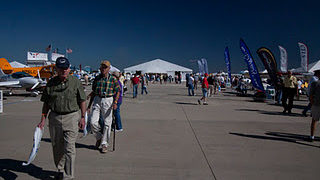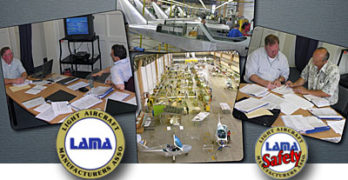CESSNA’S DISCOVER FLYING
I met new business leader for the Skycatcher LSA, Tracy Leopold, at Sun ‘n Fun 2012 where she confirmed the Wichita giant’s support for their lightest aircraft, now being assembled in Independence alongside other Cessna models. As summer began, Tracy’s Skycatcher group amped up their game with a program called Discover Flying Challenge. *** After hiring eight university graduate flight instructors — plus a ninth to act as dispatcher — the team took off in all directions and will reunite again at AirVenture 2012. Meanwhile, the youthful team is visiting Cessna Pilot Centers and non-CPC FBOs plus fly-ins and air shows all the while doing what college grads do these days: updating Facebook and Twitter feeds and blogging about their activities. *** “We wanted to do something different, something that would get the attention of the next generation of pilots while at the same time getting the Skycatcher in front of the public,” explained Tracy.
Search Results for : BRS parachutes
Not finding exactly what you expected? Try our advanced search option.
Select a manufacturer to go straight to all our content about that manufacturer.
Select an aircraft model to go straight to all our content about that model.
LSA Highlights from Sun ‘n Fun 2012
Whew! It’s over. Man, Sun ‘n Fun can be the busiest six days of one’s life… well, at least until the next one. In this survey article, I want to skim the very top of what I found interesting at the recently concluded show. Each highlight will get fuller coverage. Before starting, though, I owe a couple shout-outs. *** A huge, enormous thanks to Jim Lawrence who kept you up on a daily basis. Accomplishing that means long days shooting photos, interviewing personalities, and working into the night in a motel room with a crappy Internet connection. It may look easy and fun but only half that assessment is true (hint: it ain’t easy). *** Secondly, another thanks-a-million to UltralightNews, my video collaborator. I have the easy job; they will put in an enormous number of hours to edit and finish more than two dozen new videos that I’ll post here as each is done.
SAFE!
(Another Persective)
Watch the video. Open your mind. Put yourself in this cockpit. Imagine it happening to you. Think of the people you love and who love you. *** Dan Johnson wrote about this yesterday in his blog post (my writing home away from home) with some tasty comments based on his years at BRS parachutes, so I’ll direct you there for his in-depth overview. *** My purpose in posting here is more personal. I want you to fly safely your entire, long life. *** But any pilot — and you know who you are — who has so far convinced him/herself that an airframe parachute shouldn’t be an essential component of any aircraft, please watch the video. *** Then try to make a rational argument afterwards against recreational aircraft carrying onboard chutes. *** Yes, the pilot is engaging in high-stress aerobatics, which the vast majority of us will never do.
Sebring EXPO: 2.5 Perfect Days
Sebring is alive and well and gliding along better than ever. That’s more than I can say for the wireless where I’ve tried to post since Thursday night, so today, you get two point five posts for the price of one. *** First bit of news: Opening day Thursday was the best attended in the show’s eight year history (not five years as I doofishly reported the other day). Aiding and abetting: beautiful, absolutely beautiful weather. No hurricanes, no clouds of leaflets from Republican Presidential hopefuls, just a lavishly enjoyable (for us snowbirds at least) 70 degrees, with a steady 10 knot wind a good part of the day, followed by a crisp, clear night. Thank the Maker. *** Your humble blogster took full advantage of opening day by spending almost half of it shooting and flying the new BRM Bristell S-LSA (yes, it’s ASTMified). A very, very sweet ship.
Politics and LSA… 1st in a Series: Certification
In a series of posts from time to time, I will explore the relationship between government(s) and aviation. I plan to take a global view but the essence is this: Since the beginning of aviation (or at least since near the beginning) government has approved any aircraft the public may buy and fly. A newly designed model, after proving its airworthiness to company engineers and management, had to gain government approval before sales could begin. *** The cost curve has been steeply upward. Cirrus Design is a company whose emergence I watched very closely when I worked for BRS parachutes some years ago. We were deeply involved with Cirrus in the certification of a parachute system for the SR20. My front-row seat gave an intimate look into the approval process. Cirrus reported a cost of many tens of millions of dollars to get a Part 23 Type and Production Certificate. *** Then came LSA.
All-American Revo Sets New Standard
Behold the Revo, a new benchmark in weight-shift trike design.
Look carefully and you’ll see the Revo is not like any weightshift
light-sport aircraft you’ve seen before. The Revo had to
surpass impressive work by larger, more established companies to leap
to the forefront. Any way you look at it, the Revo is simply extraordinary.
I’ve been lucky to fly many trikes over the years. Every few years, one
of the leading producers would make a remarkable step forward in the
design of these flying machines with changes that tended to be evolutionary,
not revolutionary. Among them, I cannot recall a clean sheet of
both carriage and wing debuted as a single aircraft.
Welcome to Revo from Evolution Trikes, an all-new, blazingly fast
American trike like none before it.
The more I examined the Revo and then flew with Larry Mednick of
Evolution (and Tampabay Aerosports), I realized even Air Création’s
beautiful Tanarg trike had been done one better.
Aero-Lite Revisited
[UPDATE fall 2009 — Aero-Works left the business several years ago (though in late 2009, originator Terry Raber said he will return to production). Meanwhile, producer Wings of Freedom has begun work on the Phoenix-103, a derivation of the Aero-Lite 103 but with numerous small changes.
This article refers to the aircraft built by AeroWorks and will not be identical to the Aero-Lite 103. The companies are different and Terry Raber has no association with Wings of Freedom.
In the uncertain “new world of Sport Pilot,”
one thing remains exactly as it was – FAR Part 103. While new rules and regulations may shake the ground under the feet of ultralight pilots, Aero-Works continues to produce their popular AeroLite 103. If you build it carefully, you can still enjoy a twin-cylinder ultralight with lots of features that fits Part 103.
Even airline pilots who normally fly under smothering regulations appreciate FAA’s simplest, least intrusive rule, Part 103.
Lambada’s Choice
Motor Along Economically
Not all light sport aircraft (LSA) are made alike.
You probably knew that already, but consider
the Lambada. This sleek composite 2-seat
shoulder wing is part airplane, part glider and it has
the interchangeable wing tips to prove it.
For a soaring enthusiast like myself, flying the
Lambada gratified a desire I’ve had for years, since I
first saw the Urban Air design at a German airshow. On
January 9, 2008, I went aloft in a Lambada with Josef
Bostik – a former U.S. National Champion hang glider
pilot turned airline captain – at Wallaby Ranch, an
iconic hang glider park in Central Florida where hang
gliders are towed aloft behind specially built ultralights.
The particular Lambada I flew bore N-number
N109UA. Bostik indicated that 108 other Lambada
aircraft are flying around the world, though the
one I flew is the first ’08 model to pass ASTM standard
certification.
The Sport Hornet
Is It the First Ultralight SLSA?
Among fixed-wing airplanes, the Sport Hornet from Higher Class Aviation
may be the first ultralight-type airplane to achieve special light-sport
aircraft (S-LSA) status. Several weight-shift trikes and a few powered
parachutes also have made the jump, making declarations of meeting the
ASTM industry consensus standards.
As company owner Robert Gaither and his team made the Hornet ready for the
LSA market, the airplane was put through a series of changes resulting in the
name Sport Hornet.
From Hornet to Super Hornet to Sport Hornet
Jim Millett, of U.S. Light Aircraft,
designed the original Hornet thinking
he could improve upon the Quad
City Ultralight’s Challenger. His was
a ground-up different design that had
only the look of a Challenger. Much
of what Jim created remains on the
Sport Hornet of today, but much has
also changed, sometimes to meet
S-LSA requirements and sometimes
because it was the right thing to do.
Urban Air USA Brings Lambada Closer
Bostik Industries is known to some LSA buyers as “the other supplier” of emergency ballistic parachute systems (Magnum). Indeed, that activity appears to be thriving as major producer BRS Parachutes intensifies its focus on larger GA airplanes and light jet projects. *** An affable Joe Bostik (airline captain and champion hang glider pilot) is also the U.S. agent for the shapely Lambada motorglider. Though soaring pilots will be instantly drawn to this reasonably priced motorglider (less than $100,000; other choices can cost much more), the airplane also works as a cross country cruiser, able to fly 800 nautical miles at speeds of 100 mph. Though Rotax 9-series engines offer great reliability, should the powerplant go quiet, a Lambada pilot can glide up to six miles from only 1,000 feet off the ground. Bostik now has his Lamabada website well populated with info, specs, and photos.
- « Previous Page
- 1
- 2
- 3
- 4
- 5
- …
- 9
- Next Page »











